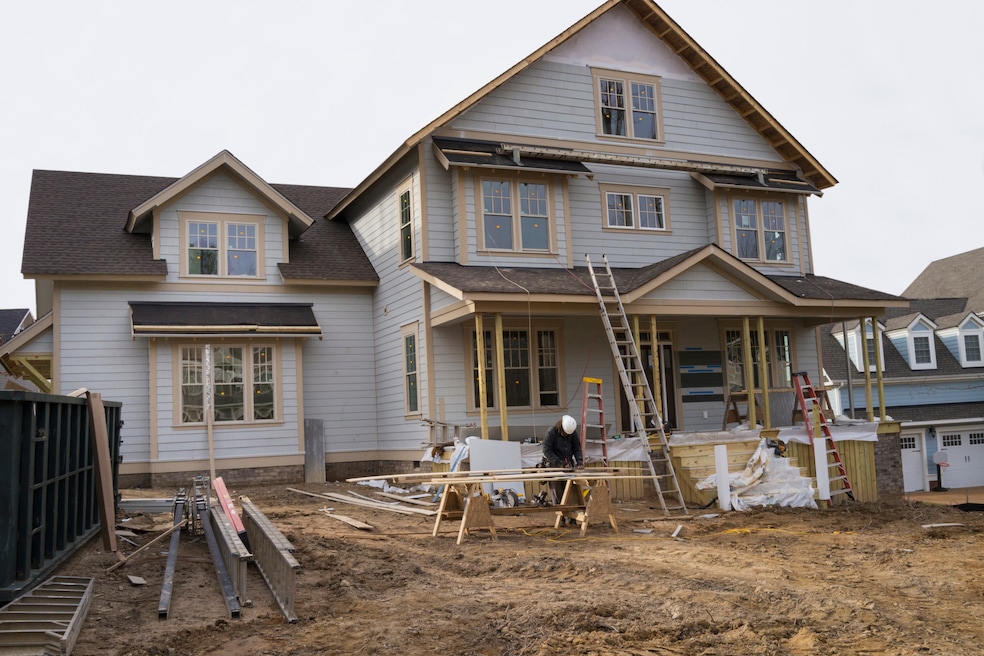Although it isn't required, hiring a licensed pre-drywall inspector for your custom home project is highly recommended to check your builder's work.
Professional pre-drywall inspections cover structural, exterior, roofing, plumbing, electrical, heating and air conditioning systems, as well as other components.
But inspectors won't evaluate everything. It’s your responsibility to make sure these items match your contract in terms of materials, manufacturer specifications, installation and design. Use this list as a personal guide during your own pre-drywall self-inspection. Please note that this is not a substitute for a proper pre-drywall inspection.
Safety concerns come first
Before conducting your pre-drywall self-inspection, bring the following safety items:
- A hard hat to protect your head
- Close-toed shoes or steel-toed boots to avoid foot injuries
- Clear safety glasses
- A neon-colored safety vest
- Construction or maintenance gloves
Next, check with the builder and schedule a visit to the property at your convenience. Upon arrival, you will undergo a walkthrough with the first category.
Structural
First, check on these structural elements:
- Lumber type:
- Inspect a particular piece of lumber for particle boards, which have a rough, grainy appearance and texture. If you notice this, it could be a sign of processed lumber. By comparison, authentic lumber has a fine, smooth texture and appearance.
- Match with online photos: Grab photos of your chosen lumber type and compare them to what your builder used.
- Grab a sample and compare. Go to a home improvement store or a lumber yard and obtain a sample of the wood you specified in your design. Then, cross-reference it with what the builder used.
- Inspect a particular piece of lumber for particle boards, which have a rough, grainy appearance and texture. If you notice this, it could be a sign of processed lumber. By comparison, authentic lumber has a fine, smooth texture and appearance.
- Lumber quality: Do you notice any studs, knots, wet wood or damaged components?
- Framing type: wood framing, steel framing or whatever you specified in the contract
- Framing components: studs, rafters, headers, columns, beams and sheathing
- Foundational elements: size, footing, anchorage and columns
Exterior
From the outside of your new home, check on the following elements in terms of materials, manufacturer brand, installation and design accordance:
- Windows: Look at the frame design and read the manufacturer's label.
- Exterior doors: Is it solid or hollow? Tap the door and listen. A hollow door will have an audible echo, while a solid door will sound solid. You could also check the weight by opening and closing it.
Roofing
Check on these things in terms of materials, manufacturer brand, installation and design accordance:
- Electrical components for accessories, such as solar panels or antennae: Compare these elements with your design specifications to ensure a match. The accessories themselves won't be installed until after the pre-drywall inspection.
- Roof covering: Obtain a sample of what's in your contract or use online photos to match.
- Skylight: Compare these elements with your design specifications to confirm a match.
Plumbing
Check and verify the following plumbing system elements:
- Automatic safety controls: Ensure that smoke detectors are in the correct locations according to your design plans.
- Sprinklers: Are they in the right locations? Check your design plans to ensure accuracy.
- Swimming pools: Use a tape measure or a laser distance tool to find the length and width of your square, rectangular or oval pool. If your pool is circular, you'd look for the radius and diameter. After that, use these calculations to find your square footage:
- Square or rectangular pool: length x width
- Circular: 3.14 x (radius x radius)
- Oval: length x width x 0.8
Electrical
Check on the following electrical system elements in terms of materials, manufacturer brand, installation and design accordance:
- Security systems and heat detectors for fire safety
- Wiring for phones, security system components, cable TV, intercoms and other elements that aren’t part of the primary electrical system
- Backup electrical generators and other alternative power systems
Heating and air conditioning
Check on the following heating and air conditioning elements:
- Furnace or fireplace: Check the manufacturer's label to confirm the model, ensure proper ventilation and determine whether it's gas or electric.
- Exterior air conditioning unit: Review the manufacturer's label and make sure the brand matches what you specified.
- Thermostat: Review your design plans to ensure the thermostat is positioned correctly. Ideally, it should be placed away from direct sunlight, air vents, or other rooms, such as the kitchen or bathrooms.
- Ductwork and ventilation layout: Look at your design plans and confirm that the ducts are in the right place.
Interiors
Check on the following interior elements:
- Room size and square footage: Use a tape measure to calculate the square footage of each room. Then, compare those measurements to your design brief.
- Flooring: Look at the design plans and reconfirm the flooring type and brand you selected. Next, grab a sample or find a picture to compare with what's in the house.
- Waterproofing of windows and doors (also known as flashing): Ensure a visible seal is present around the exterior of the window.
Check for residential code requirements
A second opinion is always valuable when ensuring code compliance. Your third-party inspector may not check for code alignment during their pre-drywall inspection walkthrough. However, you can search for residential building codes via the International Code Council under the International Residential Code. Or you could hire another inspector to focus specifically on code compliance. Regardless, don’t let the inspection process fracture your relationship with the builder.
“Maintain a good, professional relationship with your builder,” Brian Blackwell, CEO of Code Pro Resources, said. “Clear communication can prevent misunderstandings and even legal disputes.”
